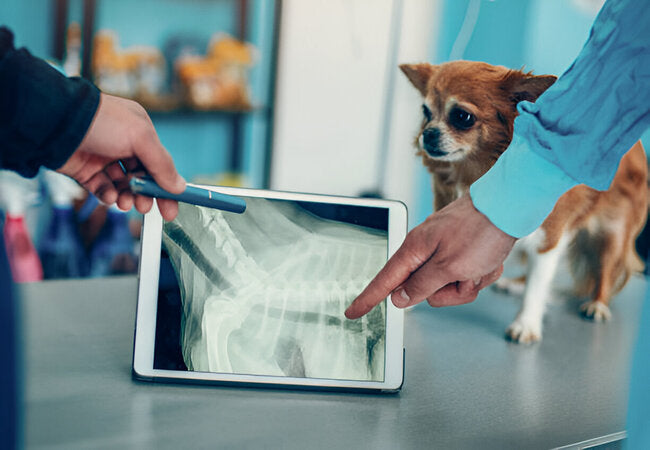Dog X‑Rays 2025: Vet Insights 🩺🐾

In this article
Dog X‑Rays 2025: Vet Insights 🩺🐾
By Dr. Duncan Houston BVSc
Hello! I’m Dr Duncan Houston BVSc, veterinarian and founder of Ask A Vet. X‑rays are a vital tool in veterinary diagnostics—fast, safe, and revealing issues hidden beneath the surface. This updated 2025 guide explores when to use x-rays, cost breakdowns across the U.S., sedation considerations, step-by-step procedures, benefits, limitations, and advanced imaging alternatives to empower your care decisions. 🧠📸
1. 📍 When Does Your Dog Need an X‑Ray?
- Trauma & fractures: Limping, pain, or swelling after injury.
- Swallowed foreign objects or blockages—e.g. toys, bones.
- Joint & bone conditions: Hip dysplasia, dysplasia, arthritis.
- Chest issues: Coughing, pneumonia, heart enlargement.
- Abdomen concerns: Bloating, abdominal pain, organ size evaluation.
- Spinal problems: Suspected IVDD, disc disease.
- Dental evaluation: Assess root infections or tooth fractures.
2. 💵 Cost Breakdown in 2025
| Service | Typical Cost (USD) |
|---|---|
| Single X‑ray image | $100 – $250 (avg ≈ $133) |
| Multiple views (chest/lower | $150 – $500 depending on the number |
| Sedation | $50 – $250 depending on size & need |
| Full anesthesia | $200 – $400 |
According to CareCredit, the national average is $133, typically $102–237. GoodRx and Pawlicy suggest ranges between $75–500. Additional costs may include sedation ($50–200) or pre-sedation bloodwork ($100–200).
3. 🩺 Sedation & Positioning
- Many calm dogs need no sedation.
- If pain or movement present, mild sedation is used ($50–150 for small dogs, up to $250 for large).
- Full anesthesia may be necessary for uncooperative dogs or precise positioning.
- Protective lead gear is used by staff; dogs are positioned to capture required views.
4. 🧭 Procedure Steps
- Physical exam & discussion of what to image.
- Fasting if sedation for 6–12 hours.
- Admin IV catheter if sedated/anesthetized.
- Position the dog and capture 2–4 images, depending on the body part.
- Immediate digital image review; retake if needed.
- Interpretation by vet; radiologist consult if complex.
- Recovery from sedation and post-procedure discussion.
5. ⚕️ Benefits & Limitations
- Benefits: Quick, painless, reveals bones, lungs, foreign objects, and organ size.
- Limitations: Poor soft tissue contrast, 2D perspective, skull shows bone not brain.
6. ⚠️ Safety & Risks
- X-ray uses very low radiation; digital choice reduces dose.
- Sedation risks are low; pre-checks mitigate concerns.
- Misalignment can result in repeat imaging; digital allows immediate correction.
7. 🧠 Advanced Imaging Options
- Ultrasound: For soft tissues—abdomen, heart ($300–600).
- CT scan: Bone detail, nasal passages ($1,500–3,500).
- MRI: Soft tissue/spine ($1,500–6,000).
- Fluoroscopy: Real-time motion imaging ($300–800).
8. 💡 Cost Savings Strategies
- Compare pricing at local vs emergency clinics.
- Package discounts for multiple views.
- Use veterinary teaching hospitals.
- Pet insurance often covers imaging.
- Insist on digital images to avoid retakes.
9. 🧩 Ask A Vet, Woopf & Purrz Support
- Ask A Vet: Remote consults to decide imaging need, sedation advice, and interpreting results.
10. ✅ Final Thoughts
Dog x‑rays in 2025 remain essential diagnostics: non-invasive, quick, and revealing. Expect costs of $100–250 per image, with sedation and location affecting final price. They’re powerful for diagnosing fractures, blockages, organ issues, and more. When advanced imaging is needed, ultrasound, CT, or MRI become valuable next steps. Use savvy planning, insurance, and tools like Ask A Vet to streamline the process. With informed care, you’ll help your dog stay safe, healthy, and comfortably diagnosed. 🐶💙
Need sedation checklists, imaging comparison charts, or care trackers? Visit AskAVet.com, explore calming kits on. Clear insights for clearer care! 📸✨


